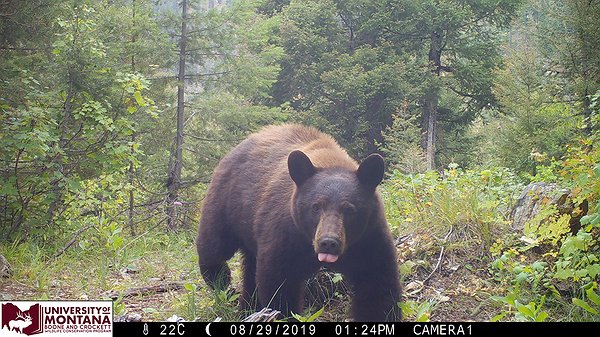Study reveals decline in mammal diversity with urbanization
MISSOULA – An elk pauses to gaze into the valley; a red fox playfully pounces into the snow; a mountain lion carries a white-tailed deer in its clamped jaws.
These scenes, typically associated with remote wilderness areas, unfold surprisingly just above our rooftops, around the corner from our backyard garden and up the trail from our bustling neighborhoods.
Through the lens of Chris Hansen’s trail cameras, such snapshots not only capture these remarkable moments but also convey a critical call for the preservation of wild spaces.
Hansen is a postdoctoral researcher in the Boone and Crockett Wildlife Conservation Program at the University of Montana. His team deployed 178 motion-activated trail cameras at random sites across urban, suburban, exurban, rural and wild regions during a comprehensive study spanning from May to October 2019-2020.
The research aimed to identify how the number of houses in an area affects where animals live, how many of them there are, how many different types of species are present, how common they are and when they are most active during the day.
The findings, recently published in the Journal of Mammalogy, revealed that as cities get more crowded, there are fewer types of mammals around. Larger animals, in particular, are less common in urban areas. Hansen’s study emphasizes the critical need to maintain wild spaces for species unable to thrive in developed areas.
Hansen earned his Ph.D. from UM in December 2021. He has been at the forefront of wildlife research, focusing on the impact of urbanization and grazing on mammal communities.
“Chris’s work brings vital insights into the complex relationship between urbanization and mammalian biodiversity,” said Joshua Millspaugh, Hansen’s mentor and the Boone and Crockett Professor of Wildlife Conservation at UM. “His research not only highlights the importance of preserving wild spaces but also contributes valuable data to the ongoing dialogue surrounding urban planning and wildlife conservation.”
Hansen's interest in the subject stemmed from collaborative work with Roland Kays, a research professor at North Carolina State University and director of the Biodiversity & Earth Observation Lab at the NC Museum of Natural Sciences. The work focused on urban wildlife and the effects of urbanization on mammals in eastern regions. Motivated to explore regional differences, Hansen’s study in Missoula challenged assumptions and provided a nuanced perspective on the impact of urbanization in less developed areas.
“I think it’s great in that it demonstrates how important these wild spaces are,” Hansen said. “As places like Missoula continue to grow, and we think about urban planning, it demonstrates that we don’t want to develop outward into wild areas, showing that wild spaces are important to maintaining a diverse mammal community.”
Hansen’s research contributes significantly to the understanding of wildlife conservation in the face of urbanization, emphasizing the need for thoughtful planning to balance human development with the preservation of crucial habitats.
Learn more about Hansen and his work in this video.




